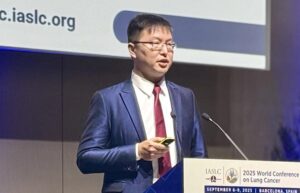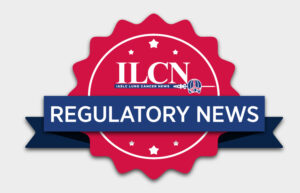New data presented at the 2025 World Conference on Lung Cancer (WCLC) strengthen the evidence base linking air pollution and lung cancer. Data have shown that increasing exposure to particulate matter smaller than 2.5 micrometers in diameter (PM2.5) shows a dose-dependent response with positive lung cancer screening results, lung cancer risk, and lung cancer occurrence in Taiwan and Western Europe.

Increasingly, studies are adding evidence to support expanding screening criteria to reach more individuals at higher risk of developing lung cancer.
“We all recognize now that air pollution is a leading cause of lung cancer, and recent evidence suggests the main effect might be through tumor promotion,” said Rafael Meza, PhD, Distinguished Senior Scientist at the University of British Columbia BC Cancer Research Institute in Vancouver. “The nature of the relationship in terms of timing and how risk evolves is less clear, particularly in those who don’t smoke or have never smoked. Understanding different risk factors that can allow us to identify those at high risk is pretty important.”
Dr. Meza described an analysis of air pollution exposure and lung cancer screening and lung cancer risk using the Taiwan Lung Cancer Screening in Never-Smoker Trial (TALENT) during the session Diving Deep into Diversity: Old and New Risks for Lung Cancer.
Researchers estimated PM2.5 exposure based on TALENT participants’ residential address at enrollment. Outcome measures included having a nodule present at baseline lung cancer screening, a positive screen, a LungRADS 3 or 4 result, lung cancer diagnosis within 1 year, and advanced lung cancer.

Participants with cancer had median PM2.5 exposures of 22.11 μg/m3 compared with 21.22 μg/m3 for those without cancer. Risk for all study outcomes increased with PM2.5 levels from 12 to 20 μg/m3, peaking around 25 μg/m3 and then decreasing. Dr. Meza suggested competing risks at extremely high levels of PM2.5 may account for declining air pollution risk above 25 μg/m3.
“These findings are consistent with the role of air pollution and tumor promotion,” he said.
A lung tissue culture study presented during the session also identified PM2.5 as a tumor initiator and promoter.
BC Cancer Research Institute medical/PhD student Peiyao Wang presented data that show as few as three 24-hour exposures to PM2.5 could induce irreversible changes in BEAS-2B cell morphology.
Six 24-hour exposures induced anchorage-independent cell colony formation similar to cells exposed to tobacco smoke concentrate, Wang said. PM2.5 exposure also increased cell mutational burden.
“PM2.5 is particularly dangerous because it is able to accumulate in the most distal airways,” Ms. Wang said. “In the literature, it is well-established that PM2.5 is a promoter of lung cancer. PM2.5 may have a role in lung cancer initiation by changes in cell morphology that are irreversible, increased colony-forming capacity, and an increase in mutational burden.”

An analysis of prospective screening trials in Belgium and the Netherlands demonstrated that combining genetic and air pollution scores could accurately stratify risk for lung cancer and identify individuals at elevated risk using conventional low-dose CT screening.
Results of the study were presented by Lianne Trap, MSc, a PhD student at Erasmus University Medical Center, Rotterdam, Netherlands, during a separate session, Smoking and Beyond: Navigating Risk Factors in Lung Cancer.
The Netherlands-Leuvens Longkanker Screenings Onderzook (NELSON) and the Rotterdam Study had a combined population of more than 18,000 individuals.
Researchers found that combining PM2.5 exposure and a 36-factor polygenic risk score could distinguish individuals with a lung cancer diagnosis from those with positive/indeterminate screening results.
Ms. Trap noted that these predictors may have a role in lung cancer risk stratification. Distinguishing between lung cancer and positive/indeterminate results suggests the predictors could help limit unnecessary follow-up in lung cancer screening programs.










